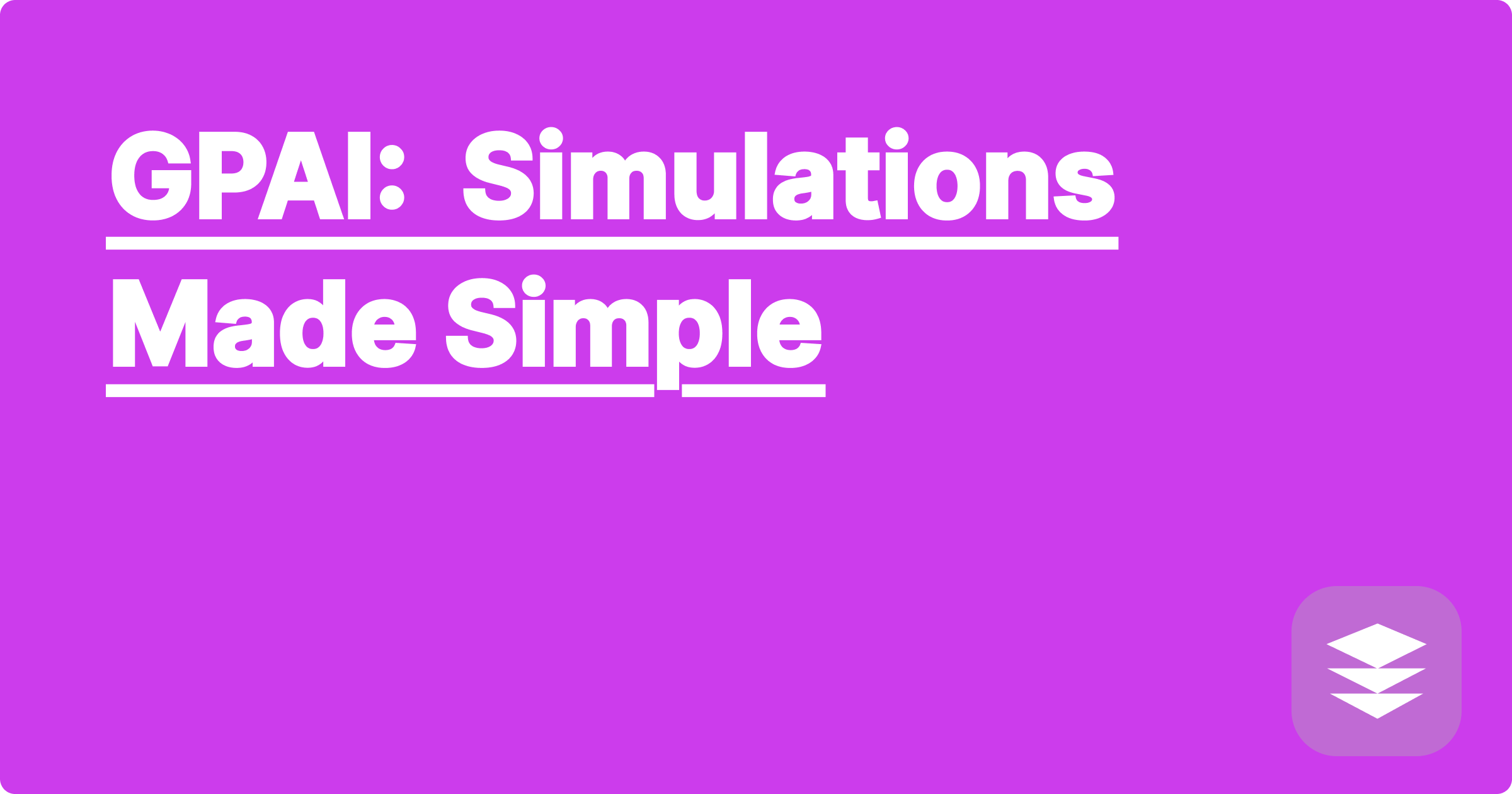
The world of STEM is increasingly reliant on complex simulations to model and understand intricate phenomena. From designing next-generation aircraft to predicting the spread of diseases, simulations offer invaluable insights. However, building and running these simulations can be a daunting task, often requiring specialized knowledge, extensive coding, and significant computational resources. Artificial intelligence is rapidly transforming this landscape, offering powerful tools to simplify and democratize the process of creating and using simulations.
For STEM students and researchers, mastering simulation techniques is crucial for advancing their studies and contributing to cutting-edge research. Traditional methods can be time-consuming and resource-intensive, creating a barrier to entry for many. AI-powered tools are changing this dynamic, offering accessible and user-friendly platforms for building, running, and analyzing simulations. This empowers students and researchers to explore complex systems, test hypotheses, and gain a deeper understanding of their chosen fields, ultimately accelerating the pace of scientific discovery.
Developing accurate and efficient simulations is a multi-faceted challenge. One of the primary hurdles is the complexity of translating real-world phenomena into mathematical models. This requires a deep understanding of the underlying physics, chemistry, or biological processes involved, as well as the ability to represent these processes using appropriate mathematical equations. Another challenge is the computational cost of running simulations, particularly for large-scale systems or complex interactions. High-performance computing resources are often necessary, which can be expensive and inaccessible to many researchers. Finally, the process of analyzing and interpreting simulation results can be complex, requiring specialized software and expertise in data visualization and statistical analysis.
AI tools like ChatGPT, Claude, and Wolfram Alpha are revolutionizing the way we approach simulations. These tools can assist with various aspects of the simulation process, from formulating mathematical models to generating code and analyzing results. For instance, ChatGPT can be used to translate natural language descriptions of a system into mathematical equations, simplifying the model development process. Claude can assist in generating code for different simulation platforms, reducing the need for extensive programming knowledge. Wolfram Alpha can be leveraged for symbolic computations and data analysis, helping researchers extract meaningful insights from their simulation results. By integrating these AI tools into their workflow, STEM students and researchers can significantly reduce the time and effort required to build and run simulations.
Begin by clearly defining the problem you want to simulate. This involves identifying the key variables, parameters, and relationships within the system you are studying. Next, use an AI tool like ChatGPT to help formulate the mathematical equations that describe these relationships. Describe the system in natural language, and ChatGPT can assist in translating this into a mathematical representation. Once you have a mathematical model, use an AI tool like Claude to generate code for your chosen simulation platform. Specify the programming language and the simulation environment, and Claude can help create the necessary code to implement your model. After running the simulation, leverage Wolfram Alpha for data analysis and visualization. Input your simulation results, and Wolfram Alpha can perform various calculations, generate plots, and provide insights into the behavior of your system.
Consider the example of simulating the trajectory of a projectile. You can describe the system to ChatGPT as "a projectile launched at an angle theta with initial velocity v," and it can help you derive the equations of motion. These equations can then be used in Claude to generate code for a numerical simulation, perhaps using Python and a library like NumPy. The simulation results, such as the projectile's position and velocity over time, can then be analyzed in Wolfram Alpha to calculate parameters like the maximum height and range. Another example is simulating the growth of a bacterial population. You can describe the growth dynamics to ChatGPT, which can help formulate a differential equation representing the population growth. Claude can then generate code to solve this equation numerically, and Wolfram Alpha can be used to analyze the population growth curve and calculate parameters like the growth rate and carrying capacity.
Integrating AI tools into your academic workflow requires a strategic approach. Start by familiarizing yourself with the capabilities and limitations of different AI tools. Experiment with different platforms and identify those that best suit your specific needs. It's crucial to understand that AI tools are meant to augment, not replace, your own understanding and critical thinking skills. Always validate the output of these tools and ensure that the results are consistent with your expectations and the underlying scientific principles. Document your use of AI tools meticulously, clearly outlining the specific tasks they were used for and how they contributed to your research. This enhances the transparency and reproducibility of your work.
To effectively leverage the power of AI in simulations, cultivate a strong foundation in the underlying scientific principles and mathematical concepts relevant to your field. This will enable you to critically evaluate the output of AI tools and ensure the accuracy and validity of your simulations. Stay updated on the latest advancements in AI and explore new tools and techniques as they emerge. Engage with the broader scientific community and share your experiences and best practices for using AI in simulations. By embracing these strategies, you can harness the transformative potential of AI to accelerate your academic progress and contribute to groundbreaking research.
GPAI: Your Coding Homework Helper
GPAI: Streamline Your Research
GPAI: Differential Equations Solved